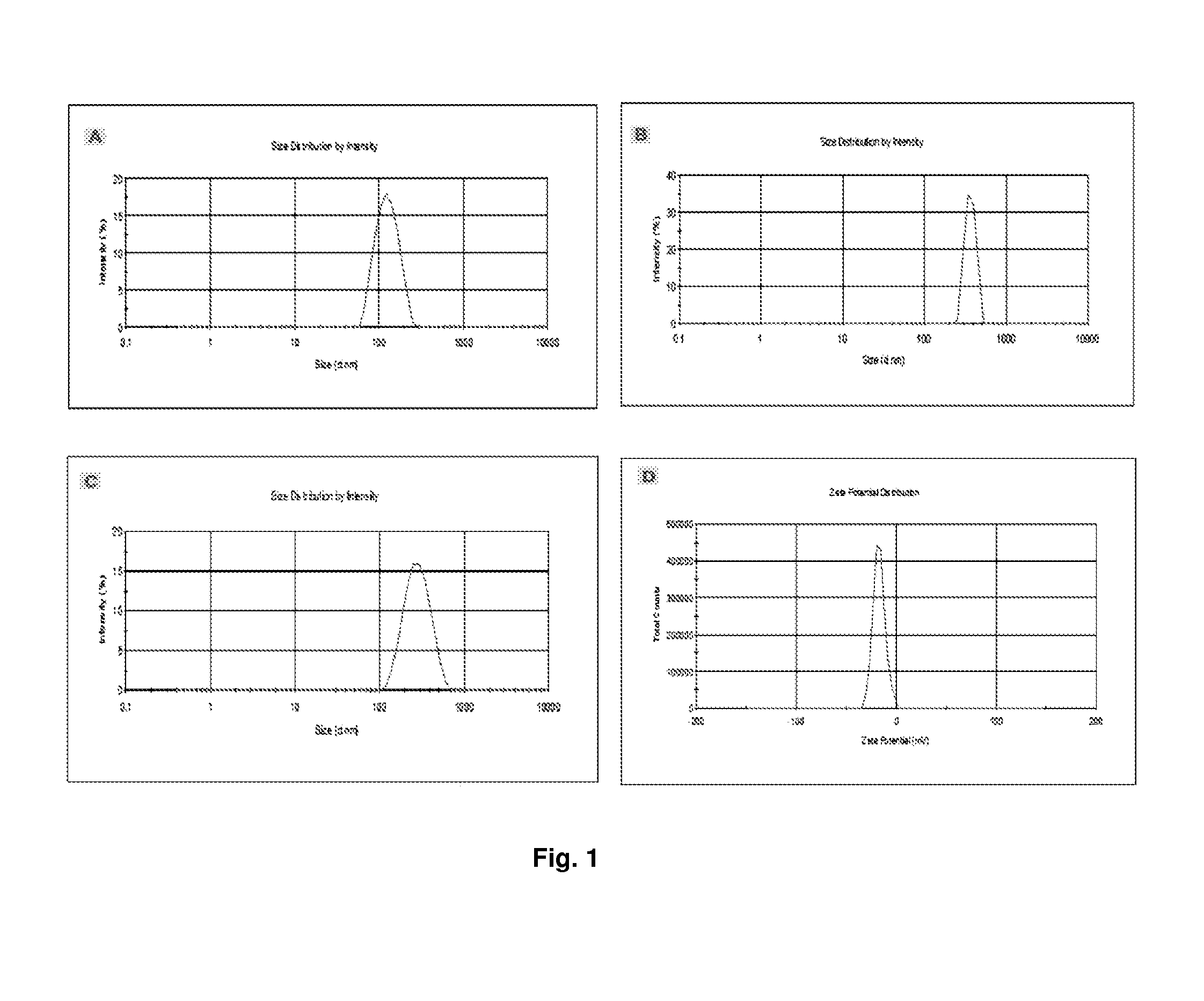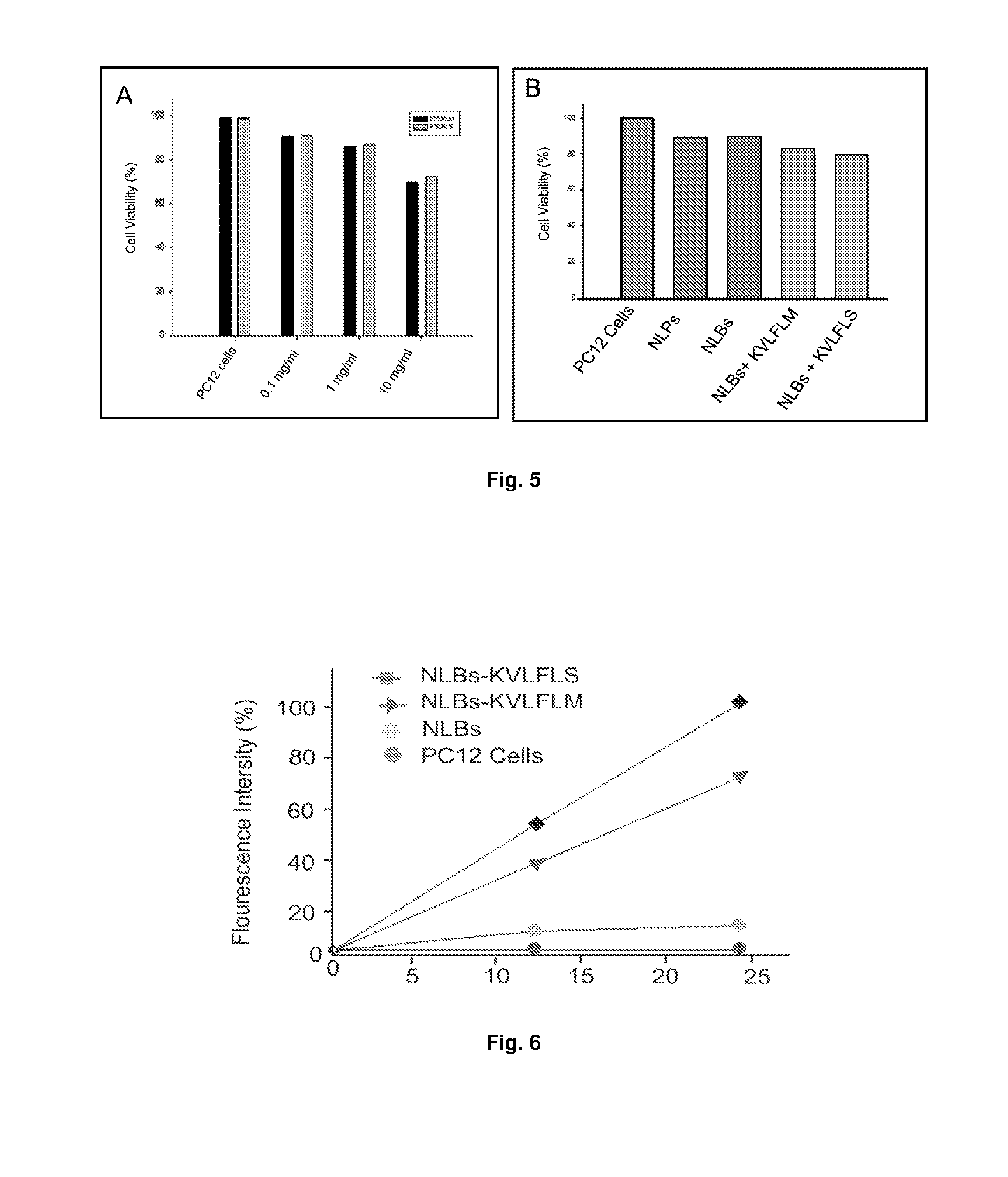Drug delivery device
- Summary
- Abstract
- Description
- Claims
- Application Information
AI Technical Summary
Benefits of technology
Problems solved by technology
Method used
Image
Examples
example 1
A Drug Delivery Device for Treating Alzheimer's Disease
Materials and Methods
Materials
[0074]Phospholipids such as distearoyl-sn-glycero-phosphatidylcholine (DSPC), cholesterol and 1,2-distearoyl-sn-glycero-3-phosphatidyl-ethanolamine-methoxypolyethyleneglycol conjugate (DSPE-mPEG 2000), and rhodamine-labeled phosphatidylethanolamine (Rh-DSPE), chitosan (medium grade molecular weight), Eudrogit RS-PO, sodium alginate, acetic acid glacial were all purchased from Sigma-Aldrich (St. Louis, Mo., USA). N,N′-dicyclohexylcarbodiimide (DCC), N-hydroxysulfosuccinimide, sodium hydroxide (NaOH) and potassium dihydrogen phosphate (KH2PO4) were purchased from Saarchem (Pty) Ltd (Brakpan, South Africa). 0.22 μm membrane filters were purchased from Millipore (Billerica, Mass., USA). Nitrogen gas was purchased from Afrox Ltd (Industria West, Germiston, SA). All of the peptide ligands were synthesized by SBS Genetech CO., Ltd (Shanghai, China). The CytoTox-Glo™ Cytotoxicity Assay (Kit) which measure c...
example 2
Drug Delivery Device for Treating Schizophrenia
Materials and Methods
Materials
[0094]Polymers utilized in this study include polyamide 6, 10 synthesized by a modified interfacial reaction. Hexamethylenediamine (Mw=116.2 g / mol), sebacoyl chloride (Mw=239.1 g / mol), anhydrous n-hexane, anhydrous potassium bromide, amitriptyline hydrochloride, and anhydrous sodium hydroxide pellets were used in the synthesis of polyamide 6, 10. The above-mentioned monomers, ethylcellulose, polycaprolactone, model drug chlorpromazine hydrochloride and cod-liver oil B.P. were purchased from Sigma Chemical Company (St Louis, Mo., USA). All other chemicals used were of analytical grade and commercially available.
Preparation of Polymeric Implantable Membrane
[0095]Polymeric membranes were prepared by a modified immersion precipitation reaction. 200 mg novel polyamide 6, 10 synthesized by modified interfacial polymerization reaction (Kolawole et al., 2007), was firstly dissolved in 2 ml formic acid. The solution...
PUM
| Property | Measurement | Unit |
|---|---|---|
| Polymeric | aaaaa | aaaaa |
| Biodegradability | aaaaa | aaaaa |
| Disorder | aaaaa | aaaaa |
Abstract
Description
Claims
Application Information
 Login to View More
Login to View More - R&D
- Intellectual Property
- Life Sciences
- Materials
- Tech Scout
- Unparalleled Data Quality
- Higher Quality Content
- 60% Fewer Hallucinations
Browse by: Latest US Patents, China's latest patents, Technical Efficacy Thesaurus, Application Domain, Technology Topic, Popular Technical Reports.
© 2025 PatSnap. All rights reserved.Legal|Privacy policy|Modern Slavery Act Transparency Statement|Sitemap|About US| Contact US: help@patsnap.com



